Yates Account
Join now
Create a Yates account today!
Sign up to join the Yates Garden Club for monthly e-mails packed with seasonal inspiration, tips for success & exclusive promotions.
Plus if you’re a Garden Club member you can take part in the Yates Growing Community - a blog to share successes, get advice & win prizes in fun challenges along the way!

Forgot password
Enter the email address associated with your account, and we'll email you a new password.

Hyacinths (Hyacinthus orientalis) are one of the most versatile spring flowering bulbs. They can be grown in the ground, in pots or in glass jars. In Spring, they produce flower spikes that contain an abundance of small flowers that cluster together, providing a great feature for borders or mass plantings.
How to grow Hyacinth in a garden
- Choose a position in full sun to part shade with well-drained soil.
- Enrich the soil with Yates Thrive Natural Blood & Bone with Seaweed. If the soil is clay based, add gypsum and fork in well.
- Place bulbs directly where the plant is to grow at a depth of 10-15 cm. Space 10-15cm apart, then cover with soil.
- Feed with Yates Thrive Rose & Flower Granular Plant Food. TIP: for an added boost apply Yates Thrive Roses & Flowers Liquid Plant Food.
- Once bulbs start to sprout gently water to keep soil lightly moist.
- Mulch with an organic mulch like woodchip or pea straw, keeping it away from the base of the plant.
- Continue to lightly water the plant after the flowers and foliage have died off, keeping the soil lightly moist.
- Once the foliage has died off, cease watering. Bulbs can stay in the soil for the next season or be pulled up and stored in a cool dry place out of direct sunlight.

How to grow Hyacinth in a pot
- Choose a pot with adequate drainage holes.
- Place pot it in a full sun to part shade position.
- Fill the pot with a quality potting mix such as Yates Premium Potting Mix.
- Plant bulbs 10-15 deep with the rough side down and pointy end up, space bulbs 10-15cm apart.
- Cover with soil.
- Water in well.
- Once bulbs start to sprout, gently water to keep soil lightly moist.
- Feed with Yates Thrive Roses & Flowers Liquid Plant Food. TIP: for an added boost apply Yates Thrive Fish Blood & Bone Plant Food Concentrate.
- Continue to lightly water the plant after the flowers and foliage have died off, keeping the soil lightly moist.
- Once the foliage has died off, cease watering. Remove the bulbs and store in a cool dry place out of direct sunlight.
Growing tips
- In the warmer climates and in areas that do not get winter frosts, it is best to keep the bulbs in the fridge for one to two months prior to planting.
- Make sure you store bulbs in a paper bag after removing and keep in a cool, dry place.
- Grow Hyacinths in clumps and as bedding plants to further enhance their appeal.
- For those with limited space or in warmer climates, Hyacinths can be grown indoors in specially designed hourglass shaped glass vases. Growing Hyacinths in vases is a great way to introduce kids to the magic of bulbs.
- Hyacinths exposed to high temperatures or too much light early in their growing period have the tendency to bloom on short or weak stems. This is most commonly seen in potted plants. To assist with strength, cover the pots until the plants are at least 2-3 cm tall and then gradually expose them to more light and warmth.
- Take care with the bulbs around young children and pets as they are poisonous if consumed.
Gomphrenas are hardy plants that provide lovely rounded, papery flower heads. They're available in shades of white, pink and plum.
Orange Trumpet Vine
Orange trumpet vine, with its brilliant cascading masses of orange tubular flowers, is one of the most spectacular winter flowering climbers.
Spring Stars
Spring Stars are a versatile addition to any garden with delightful lavender-blue, star shaped blooms.
Flax
Flaxes (Phormium spp.) are highly versatile plants which don't mind swampy or dry conditions. Great for large pots or planted en-masse in garden beds.
Recommended products
Yates Thrive Rose & Flower Granular Plant Food
Specially formulated to grow all types of flowers. With high potassium for large & abundant flowers, added calcium & iron for stronger flowers.
Yates Thrive Roses & Flowers Liquid Plant Food
Provides your flowers & roses with the balanced nutrients they require for healthy growth and flower production.
Yates Premium Potting Mix
A premium potting mix, ideal for all potted plants and shrubs, including ornamentals, fruit trees, vegies and herbs.
Yates Thrive Natural Blood & Bone with Seaweed
A certified organic garden input boosted with NZ Seaweed to gently nourish plants, enrich the soil and encourage a strong healthy root system.



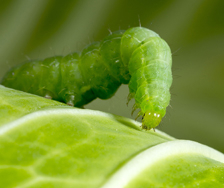
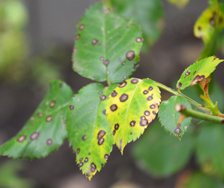
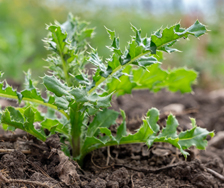
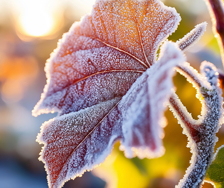
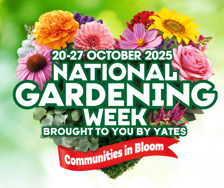









Share
Share this article on social media